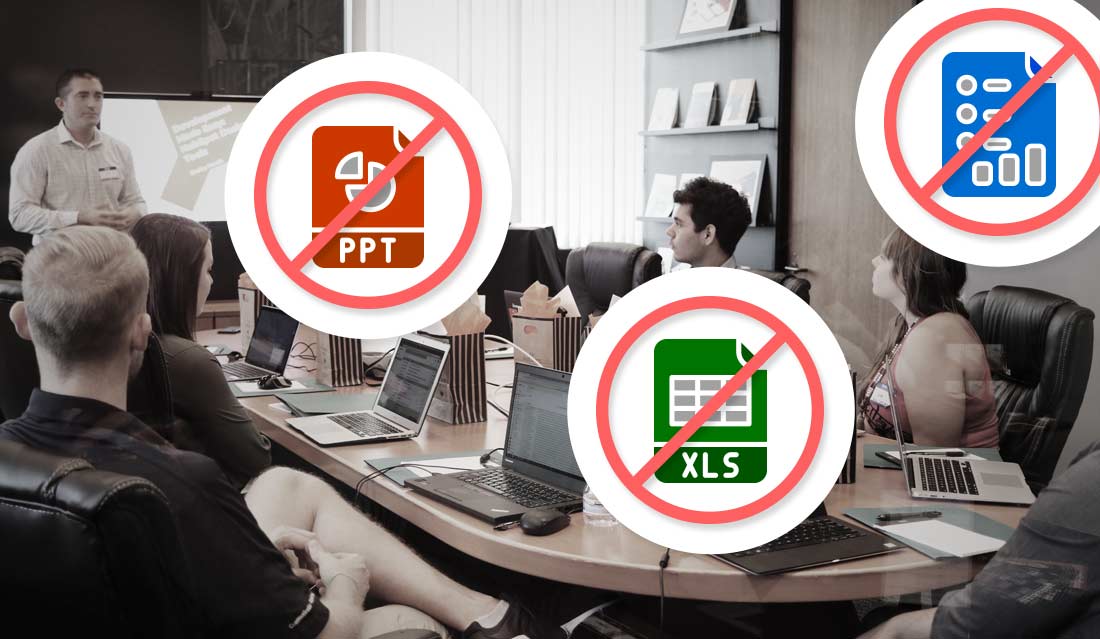We’ve written a lot about what a good company strategy, goal e.g. OKR and KPI management looks like. To understand why doing this well is an opportunity you need to see how most leadership teams and the management and execution layers below them choose to manage these areas.
Strategy in Slides
Strategies in slides are frequently presented once and are rarely revisited. This leaves to the data like this Analysis of 124 organizations revealed that only 28% of executives and middle managers responsible for executing strategy could list three of their company’s strategic priorities.
The opportunity is to bring your strategy to life, share it and make the alignment to it part of the normal business strategy delivery processes that include quarterly goal setting.
Goals in Sheets
Sure, spreadsheets are flexible, they are also where goals need high levels of maintenance to get going and then suffer from low levels of engagement as goal cycles progress, soon becoming out of date.
The opportunity is to invite departments and teams to propose, discuss and set the aligned goals with outcome based measurements that matter easily. Then watch progress get updated and reported, problems get solved and wins celebrated.
KPIs In Lots Of Systems
Tools and BI systems are great at doing what their users need them to do. They are not great at being a company-wide, friendly and inclusive way of focusing team and cross-team discussions on groups of KPIs that matter to both strategic goals and business operations.
The opportunity is to connect lots of tools and bring the subset of KPIs that show how a team is doing to a central place. The metrics then form part of meeting agendas along with goals and executional plans.
Ad Hoc Planning
If your teams are setting and discussing goals in an ad hoc cadence then there is every chance their time is being swallowed up by business-as-usual work and firefighting. The ‘keeping the lights on’ activities.
The opportunity is to commit and keep to a planning cadence. Establishing a goal and execution rhythm that keeps a balance between what’s strategically important and the day-to-day. Doing this maximizes alignment, collaboration, innovation and problem solving.
Back To Back Meetings
Time is every company’s most precious commodity and asset. It needs to be directed at work that moves the needle. Meetings are rarely where work gets done. If you can reduce meeting time by 20% and productivity by 20% that is probably going to have a huge impact.
The opportunity is to unlock time to achieve more, way more. Not to mention average meetings being a source is frustration. You do this by blending asynchronous goal and execution updates with better, more focused meeting agendas.
3 Ways To Close The Gap
If you think that resolving some of your strategic planning, goal and KPI management challenges is a big job think again. Here are three ways to close the gap quickly.
Start Having The Right Conversations
You’re never too busy to start working on performance improvement so to start to move towards having a proper process for operationalizing strategy, drive alignment across teams, and nurture a performance culture you’re going to be having some amazing and really important conversations. Many of these will mean prioritising some goals and work and de-prioritising others.
Close Knowledge Gaps
You might find that there are knowledge gaps in teams. Gaps might be around how to set outcome based goals using frameworks like OKR, how to choose KPIs, how to run great weekly team meetings that discuss both, or run retrospectives.
Coaching is not expensive and one those skills are embedded, the difference is huge and you won’t fall into the trap of using frameworks like OKR in ‘name only’.
Get Software Like ZOKRI
This always appears to be self-serving but software like ZOKRI has a huge ROI because teams that use it follow process, stay focused and deliver. The value in lagging indicators like revenue, customer and employee retention is huge.
So give it a try.

